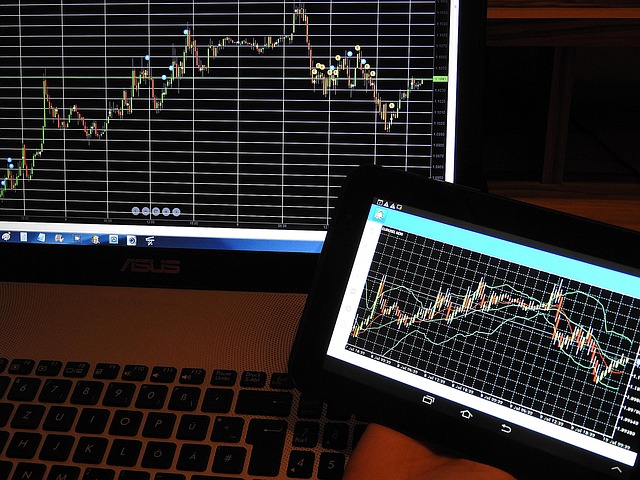How Accurate Are Forex Signals?
Author: Jameson Richman Expert
Published On: 2025-09-02
Prepared by Jameson Richman and our team of experts with over a decade of experience in cryptocurrency and digital asset analysis. Learn more about us.
Forex signals have become an integral resource for traders striving to navigate the inherently volatile and unpredictable foreign exchange (forex) market. These signals are alerts or recommendations indicating optimal points to buy or sell currency pairs, aiming to enhance trading precision, efficiency, and profitability. They are generated through a variety of analytical methods—ranging from manual technical and fundamental analysis to advanced machine learning algorithms—offering traders a potential edge. Despite their widespread adoption, a fundamental question persists: just how accurate are these forex signals? To comprehensively assess this, one must understand the sources, methodologies, influencing market factors, and effective strategies for integrating signals into a broader trading framework to achieve consistent results.

Understanding the Types of Forex Signals
Forex signals are primarily categorized into two main types—manual and automated—each with distinct mechanisms, strengths, and limitations:
- Manual Signals: These are produced by human analysts—experienced traders, financial experts, or specialized analysts—who interpret real-time market data, charts, news events, and macroeconomic indicators. The human element allows for contextual judgment, enabling analysts to incorporate geopolitical developments, unexpected market shocks, or sentiment shifts that raw algorithms might miss. Manual signals often come with detailed rationales, providing traders with insights into the reasoning behind recommendations, which can aid in better decision-making and adaptation to dynamic conditions. However, manual analysis can be subjective, susceptible to human bias, and slower in execution compared to automated systems.
- Automated Signals: Generated by algorithmic trading systems, AI models, or trading bots, these signals process vast amounts of structured data instantaneously, based on predefined rules, pattern recognition, or machine learning techniques. They operate continuously—24/7—offering rapid response capabilities, high consistency, and the elimination of emotional biases. Automated systems excel at identifying technical patterns, trend continuations, or contrarian setups with minimal latency. Nevertheless, their accuracy heavily relies on data quality, the robustness of their algorithms, and ongoing recalibration. They may struggle during unforeseen geopolitical events, sudden news releases, or black swan events, which are difficult for models to interpret accurately and rapidly.
Factors Influencing Signal Accuracy
The reliability of forex signals is subject to several interrelated factors that traders must evaluate critically to determine their practical usefulness:
- Source Credibility and Track Record: Not all signal providers are equally trustworthy. The credibility of a provider hinges on transparency about their methodologies, historical success rates, and reputation within the trading community. Providers with verifiable, independently audited performance records and clear, consistent strategies are generally more reliable. Conducting due diligence—reviewing user feedback, independent performance reviews, and the provider’s risk management policies—is essential before following or subscribing to any signals.
- Market Volatility and Economic Conditions: Periods of heightened volatility—such as during economic data releases, geopolitical crises, or central bank decisions—can significantly impact signal accuracy. Rapid price fluctuations can cause false breakouts, slippage, or whipsaws that diminish the effectiveness of signals. During such times, even well-validated signals may produce false positives or negatives, necessitating caution and stricter risk controls.
- Underlying Analysis Methodology: Signals derived from comprehensive technical and fundamental analysis tend to be more reliable. Combining multiple analysis techniques—such as trend analysis, support/resistance levels, volume, and macroeconomic data—helps confirm trade setups and filter out market noise, leading to higher probability trades.
- Timing and Execution Speed: In high-frequency or fast-moving markets, the value of a signal is often determined not just by its accuracy but also by how quickly it can be acted upon. Delays in receiving or executing signals can erode potential gains or cause entries at unfavorable levels. Utilizing automated trading platforms with direct API integrations, low-latency execution systems, or mobile notifications can significantly improve timing and execution, especially during volatile news events.
Accuracy Rates and Their Limitations
Empirical industry studies suggest that the average accuracy rate of forex signals typically ranges between 60% and 75%. This indicates that approximately six to seven out of ten signals lead to theoretically profitable trades. Premium or institutional-grade signal providers, often utilizing extensive backtesting, multi-layered analytical frameworks, and real-time data processing, claim success rates exceeding 80%. However, these figures should be interpreted with caution, as a high success rate alone does not guarantee profitability.
For instance, a service may boast an 80% success rate but still incur losses if the magnitude of losses on unprofitable trades exceeds the gains from winning trades. This highlights that profitability hinges not solely on accuracy but also on effective risk-reward management. Properly calibrated position sizing, disciplined stop-loss placement, and strategic take-profit levels are crucial in converting a high success rate into consistent profits over the long term.

The Role of Risk Management
No matter how accurate signals appear, robust risk management strategies are essential to preserve capital and ensure sustainability:
- Stop-Loss and Take-Profit Orders: Setting appropriate stop-loss levels helps limit downside risk, while predefined take-profit points lock in gains once targets are reached. Automated tools can enforce these levels consistently, reducing emotional bias.
- Position Sizing: Adjusting trade sizes based on risk appetite, account balance, and market volatility prevents overexposure, especially during uncertain market conditions.
- Trade Diversification: Distributing risk across multiple currency pairs, timeframes, or trading strategies reduces reliance on a single signal’s accuracy and buffers against market shocks.
- Adaptive Monitoring: During significant economic events or periods of heightened volatility, traders should consider modifying or temporarily suspending trades based on signals or tightening stop-loss levels to protect capital.
The Limitations of Forex Signals
Despite technological advancements and sophisticated analytical methods, no forex signal system offers a foolproof or 100% accurate solution. External factors—such as geopolitical upheavals, unexpected macroeconomic data, or sudden shifts in investor sentiment—can render signals invalid almost instantaneously. Markets are inherently complex and influenced by numerous unpredictable variables, making perfect foresight impossible.
Furthermore, excessive reliance on signals without developing independent analytical skills can lead to complacency or overconfidence. Traders should view signals as valuable tools within a diversified toolkit, supplemented by ongoing education in technical analysis, fundamental analysis, behavioral finance, and risk management. This comprehensive approach enhances decision-making resilience during market turbulence.
Choosing Reputable Signal Providers
To leverage the benefits of forex signals effectively, selecting a reputable provider is vital. Key criteria include:
- Transparency: Clear disclosure of methodologies, performance histories, risk management strategies, and underlying analysis techniques.
- Verified Performance: Access to independently audited or verified performance reports to distinguish genuine track records from marketing claims.
- Trial Periods and Feedback: Availability of demo or trial signals allows traders to evaluate reliability and compatibility with their trading style before committing capital.
- Community and Support Infrastructure: Active user communities, responsive customer support, and educational resources can enhance understanding and confidence in signal quality.
Major trading platforms and social trading communities—such as Binance, MEXC, Bitget, and Bybit) often feature social trading elements, community-shared signals, and referral programs, which can provide additional insights into signal reliability and trading strategies.

Integrating Signals into a Broader Trading Strategy
Successful forex trading hinges on the seamless integration of signals within a well-rounded strategy that combines technical, fundamental, and behavioral analyses:
- Technical Analysis: Use chart patterns, trend lines, oscillators, and volume analysis to confirm or question signal suggestions, thereby increasing confidence in trade decisions.
- Fundamental Analysis: Consider macroeconomic indicators—interest rates, inflation data, geopolitical events, and central bank policies—to anticipate broader market directions and validate signals.
- Risk Management: Implement disciplined position sizing, stop-loss, and take-profit strategies aligned with market volatility and individual risk appetite.
- Psychological Discipline: Maintain patience and emotional control, avoiding impulsive reactions driven by market noise or overconfidence, especially after a series of wins or losses.
By embedding signals within this comprehensive framework, traders can mitigate the impact of false positives, avoid overtrading, and improve overall profitability over time. Regular review and adaptation of strategies, based on changing market conditions, are also essential for sustained success.
Conclusion
The question of how accurate forex signals are cannot be answered with a simple percentage or absolute guarantee. While they can serve as valuable tools to enhance decision-making, their reliability is highly dependent on the quality of the provider, the analytical methodology, and the trader’s discipline and skill. High-quality signals, when integrated into a disciplined trading plan emphasizing robust risk management and continuous learning, can significantly improve trading outcomes. However, no system can eliminate risk or assure profits in the inherently unpredictable forex environment. External shocks, geopolitical events, and market sentiment shifts can quickly invalidate even the most sophisticated signals.
Therefore, traders must approach forex signals with cautious optimism, viewing them as part of a holistic approach that combines analytical skills, disciplined execution, and adaptive strategies. Patience, discipline, and ongoing education are your best allies in navigating the complex terrain of forex trading. Using signals as a supplementary tool—rather than a sole basis for decisions—can help you build resilience, capitalize on opportunities, and achieve long-term trading success.